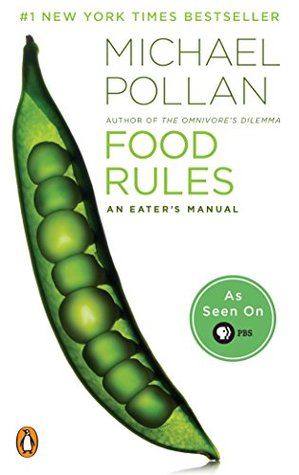More on this book
Community
Kindle Notes & Highlights
FACT 2. Populations eating a remarkably wide range of traditional diets generally don’t suffer from these chronic diseases. These diets run the gamut from ones very high in fat (the Inuit in Greenland subsist largely on seal blubber) to ones high in carbohydrate (Central American Indians subsist largely on maize and beans) to ones very high in protein (Masai tribesmen in Africa subsist chiefly on cattle blood, meat, and milk), to cite three rather extreme examples. But much the same holds true for more mixed traditional diets. What this suggests is that there is no single ideal human diet but
...more
Eat foods made from ingredients that you can picture in their raw state or growing in nature.
Eat only foods that have been cooked by humans.
Eat mostly plants, especially leaves.
“Eating what stands on one leg [mushrooms and plant foods] is better than eating what stands on two legs [fowl], which is better than eating what stands on four legs [cows, pigs, and other mammals].”
Drink the spinach water. Another bit of traditional wisdom with good science behind it: The water in which vegetables are cooked is rich in vitamins and other healthful plant chemicals. Save it for soup or add it to sauces.
Eat animals that have themselves eaten well.
If you have the space, buy a freezer. When you find a good source of pastured meat, you’ll want to buy it in quantity. Buying meat in bulk—a quarter of a steer, say, or a whole hog—is one way to eat well on a budget. Dedicated freezers are surprisingly inexpensive to buy and to operate, because they aren’t opened nearly as often as the one in your refrigerator. A freezer will also enable you to put up food from the farmers’ market, and encourage you to buy produce in bulk at the height of its season, when it will be most abundant—and therefore cheapest. And freezing does not significantly
...more
The greater the diversity of species you eat, the more likely you are to cover all your nutritional bases.
Eat well-grown food from healthy soil.
Eat wild foods when you can. Two of the most nutritious plants in the world —lamb’s quarters and purslane—are weeds, and some of the healthiest traditional diets, like the Mediterranean, make frequent use of wild greens. The fields and forests are crowded with plants containing higher levels of various phytochemicals than their domesticated cousins. Why? Because these plants have to defend themselves against pests and diseases without any help from us, and because historically we’ve tended to select and breed crop plants for sweetness; many of the defensive compounds plants produce are bitter.
...more
Eat sweet foods as you find them in nature. In nature, sugars almost always come packaged with fiber, which slows their absorption and gives you a sense of satiety before you’ve ingested too many calories. That’s why you’re always better off eating the fruit rather than drinking its juice.
Eat all the junk food you want as long as you cook it yourself. There is nothing wrong with eating sweets, fried foods, pastries, even drinking a soda every now and then, but food manufacturers have made eating these formerly expensive and hard-to-make treats so cheap and easy that we’re eating them every day. The french fry did not become America’s most popular vegetable until industry took over the jobs of washing, peeling, cutting, and frying the potatoes—and cleaning up the mess. If you made all the french fries you ate, you would eat them much less often, if only because they’re so much
...more
Pay attention, too, to the combinations of foods in traditional cultures: In Latin America, corn is traditionally cooked with lime and eaten with beans; what would otherwise be a nutritionally deficient staple becomes the basis of a healthy, balanced diet. (The beans supply amino acids lacking in corn, and the lime makes niacin available.)
“The banquet is in the first bite.” Taking this adage to heart will help you enjoy your food and eat more slowly. No other bite will taste as good as the first, and every subsequent bite will progressively diminish in satisfaction. Economists call this the law of diminishing marginal utility, and it argues for savoring the first few bites and stopping sooner than you otherwise might. For as you go on, you’ll be getting more calories, but not necessarily more pleasure.
Break the rules once in a while. Obsessing over food rules is bad for your happiness, and probably for your health too. Our experience over the past few decades suggests that dieting and worrying too much about nutrition has made us no healthier or slimmer; cultivating a relaxed attitude toward food is important. There will be special occasions when you will want to throw these rules out the window. All will not be lost (especially if you don’t throw out number 60). What matters is not the special occasion but the everyday practice—the default habits that govern your eating on a typical day.
...more


